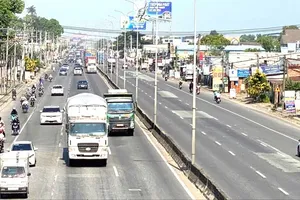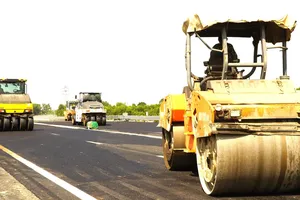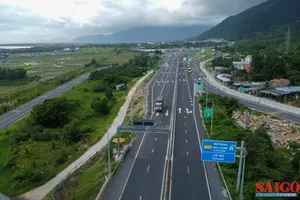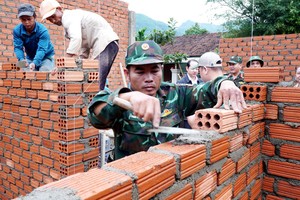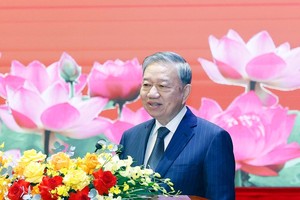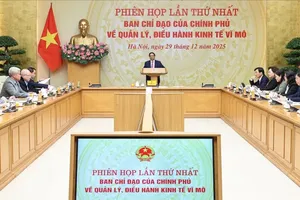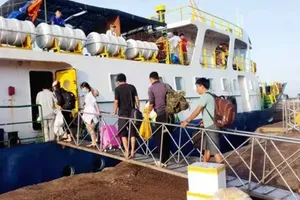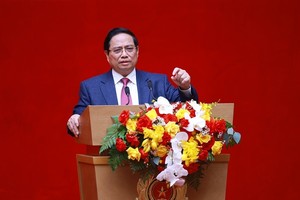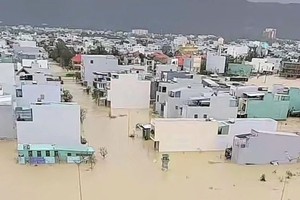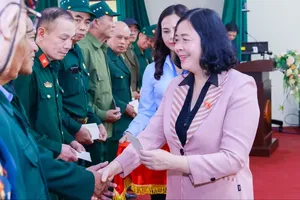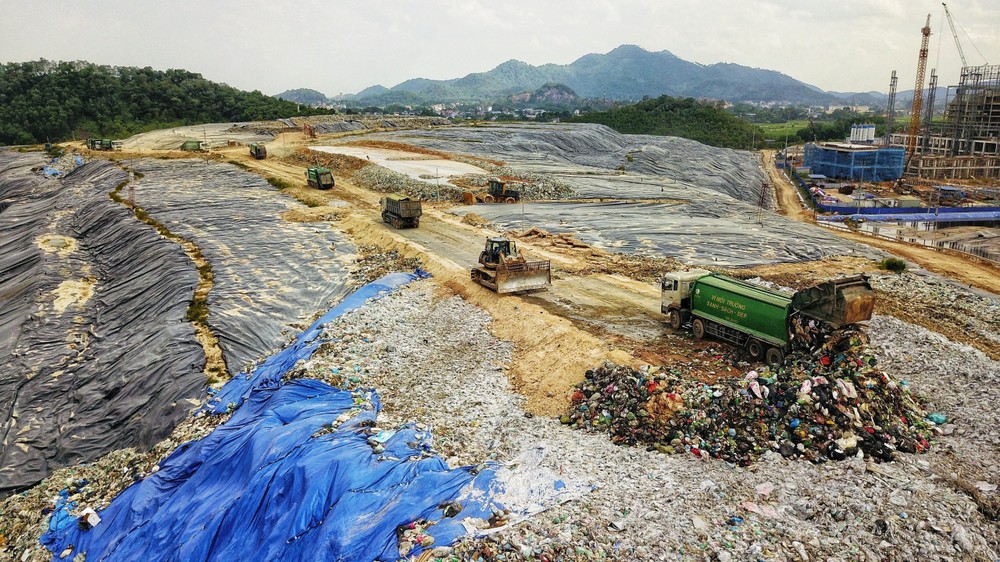
Procedural hurdles vs. Effective operations
By now, the waste treatment plant of T&T Environmental Company in Chi Dao Commune, Van Lam District, Hung Yen Province, was expected to be operational, with a capacity to process nearly 600 tons of household waste daily. However, the project has been delayed by over three years, and the site intended for the plant is still enclosed with fencing.
The situation is further complicated as Hung Yen Province, on July 7, held a conference to announce new planning and investment promotions, in accordance with the 2017 Planning Law (effective from 2019). Meanwhile, the waste management plan issued by the Ministry of Construction in 2013 is now considered outdated. Consequently, local authorities have yet to determine the technology that will be used for the waste treatment plant.
Khanh Yen Thuong Landfill, the only centralized waste disposal site in Van Ban District in Lao Cai Province, has long been overloaded and increasingly causes pollution. Despite the province's repeated efforts over the past two years to attract investment through public-private partnerships, no investors have come forward, even though the provincial planning has been approved.
In contrast, some regions have successfully attracted investment in waste treatment facilities. For instance, in Can Tho, Can Tho Waste-to-Energy Plant, located on a 5.3-hectare site in Truong Xuan Commune, Thoi Lai District, has been operational since October 2018. The plant processes about 515 tons of waste daily and has generated nearly 179 million kWh of electricity from waste incineration, contributing to the national power grid.
Another example is Phu Son Waste-to-Energy Plant, which began construction in late 2021 on an 11.2-hectare site in Huong Thuy Town, Thua Thien Hue Province, with a total investment of over VND1.69 trillion. By January 2024, the plant is expected to commence trial operations, processing approximately 500 tons of waste daily (nearly 90 percent of the province's household waste) using incineration technology to generate electricity.
Choosing the right solution
Assoc. Prof. - Dr. Nguyen Dinh Tho, Director of the Institute of Strategy and Policy on Natural Resources and Environment under the Ministry of Natural Resources and Environment, observes that Vietnam's implementation of waste sorting is too late compared to global practices. Therefore, there is a need for mechanisms that encourage businesses to participate in solid waste treatment. Special attention should be given to selecting appropriate sites for waste treatment plants and scaling projects to ensure effectiveness and local acceptance.
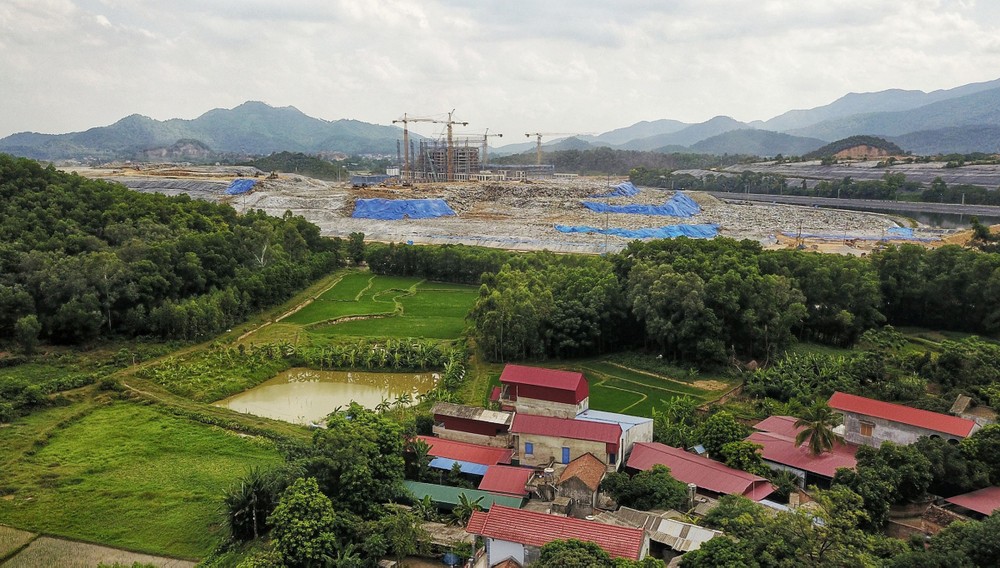
Regarding technology choice, Prof. Dr. Dang Kim Chi, Vice Chairwoman of the Vietnam Association for Conservation of Nature and Environment (VACNE), highlights that since 2000, numerous waste management methods and technologies have been introduced in Vietnam by both domestic and international entities. Despite these efforts, challenges remain due to the country’s distinct natural and socio-economic conditions, which differ from those of other nations. Each locality has its unique circumstances, and a one-size-fits-all approach is not feasible.
Prof. Dr. Dang Kim Chi emphasizes the importance of combining sanitary landfilling with waste recycling technologies, such as converting solid waste into organic compost or utilizing incineration to reduce landfill waste and extend the lifespan of landfills. Waste treatment technologies should be tailored to specific regions. To improve treatment effectiveness, it is crucial to consider models like district-level or inter-village and inter-regional waste treatment centers and to incorporate various recycling and waste reuse technologies for segregated waste.
Mr. Dinh Nam Vinh from the Department of Technology Assessment, Appraisal, and Inspection under the Ministry of Science and Technology, concurs, noting that there is no one-size-fits-all technology. The choice of technology depends on multiple factors, including local conditions, waste types, treatment scale, economic resources, and environmental considerations. Given the high moisture content and contamination of household waste in Vietnam, and the challenges in source separation, the selected waste treatment technology must address these issues and be cost-effective.
To fulfill Vietnam's commitments made at the 26th Conference of the Parties to the United Nations Framework Convention on Climate Change (COP26), it is essential to advance new, environmentally friendly waste treatment technologies that minimize greenhouse gas emissions. Mr. Dinh Nam Vinh emphasizes that it is crucial to first update regulations related to waste treatment costs and address issues with delayed payments for waste management services. These changes will drive investment and promote public-private partnerships in the waste management sector.
For solid waste treatment infrastructure across the country, mandatory regulations should be established for waste storage facilities. These regulations should ensure that tanks have sufficient capacity to hold waste for at least 8-10 days, are sealed to prevent air leakage (preferably using negative pressure), and include systems for mixing, lifting waste, leachate collection, and odor control, with 100 percent recycling of treated wastewater.
Additionally, there is a need to promptly update and revise Vietnamese standards for solid waste incinerators to reflect current practices. To promote the development of the waste-to-energy sector, it is essential to amend and supplement Decision No. 31/2014/QD-TTg, dated May 5, 2014, by the Prime Minister, which governs electricity purchase prices for waste-to-energy projects.
In terms of State management, ministries, and agencies should continue to effectively support research and technology transfer activities to evaluate and select solid waste treatment technologies that are suitable for Vietnam. This includes establishing and refining attractive incentive mechanisms to encourage businesses to engage in technology transfer for solid waste treatment, linked to investment projects and large-scale scientific and technological research initiatives.
Don’t make it “a drop in the bucket”
Waste sorting at the source is not a new concept. Yet, many “campaigns” that started 16 years ago in various regions have gradually lost momentum. For example, in Dong Nai, Bien Hoa was chosen as a pilot city for waste segregation at the source starting in 2008. However, Bien Hoa now has one of the lowest waste collection and processing rates among the 11 districts in Dong Nai.
The reasons are clear. Many regions have not developed solutions for managing each type of waste and have not found suitable recycling and treatment technologies for the segregated waste. The key question is: what happens after the waste is collected and sorted? If the subsequent processing is ineffective, as has often been the case, then all the effort put into sorting is essential “a drop in the bucket”.
Although 59 out of 63 provinces and centrally-run cities have approved provincial-level plans, including infrastructure planning for solid waste treatment areas and waste transfer and collection points, most are struggling to attract investment for these projects. In the spirit of "moving forward without hesitation," experts recommend that the first step is to select the appropriate treatment technology based on a thorough analysis of the actual conditions.
The second issue is securing land for the construction of waste treatment facilities. Investors should be granted clean land promptly, ensuring the best conditions for effective project implementation. Additionally, the government should help mitigate risks from unforeseen market fluctuations, allowing investors to focus on construction and operation.
Another important factor in attracting quality investors is ensuring that the bidding process is conducted openly and transparently, encouraging participation from businesses with the necessary qualifications and expertise in waste treatment, proprietary technology, capital assurance, and the ability to supply equipment and manage operations.

